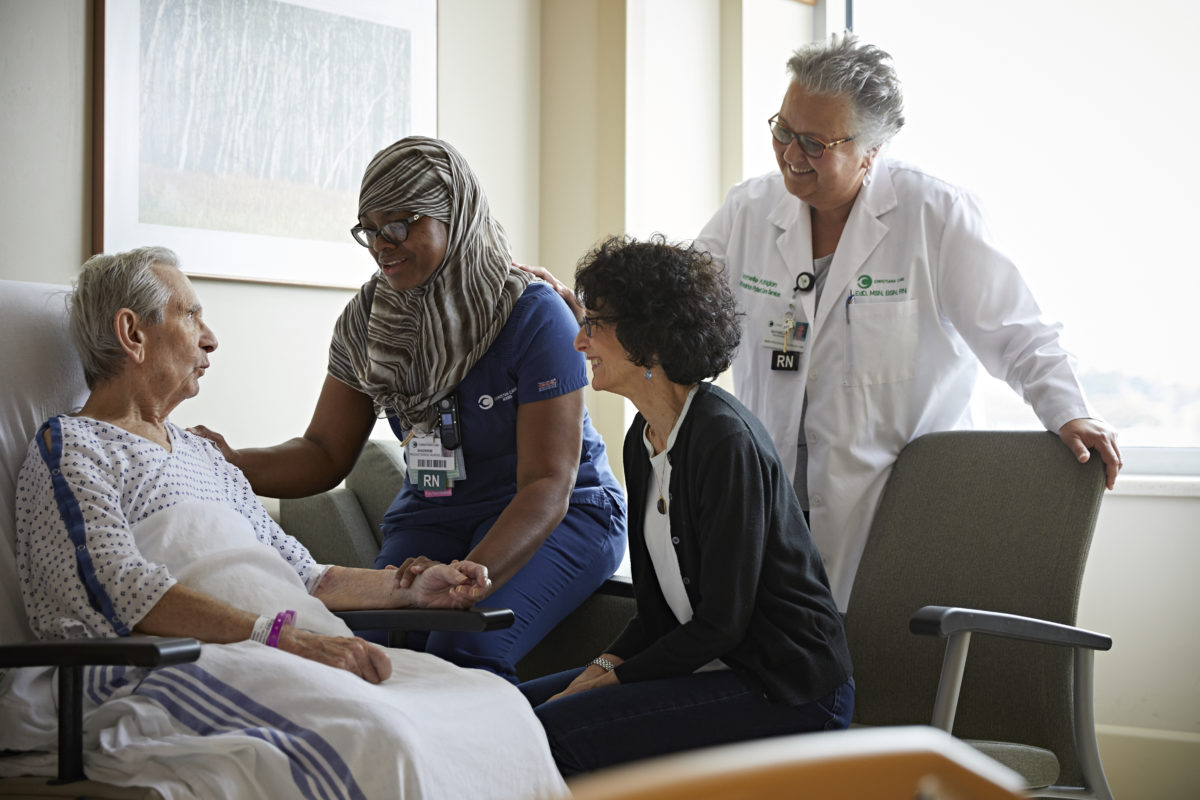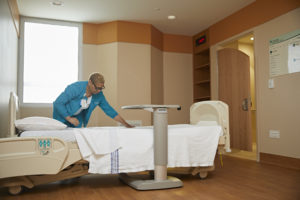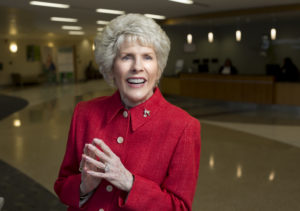Struggling with one of the worst coughs she could ever recall, 92-year-old Ann McManamon asked her daughter to take her to Wilmington Hospital at Christiana Care’s in mid-April. She was admitted and treated on the Acute Care for the Elderly Unit (ACE), designed and staffed especially for older adults, who often have complex medical needs. After a few days, McManamon was delighted to feel well and ready to go home.
“I am better today,” she said on her discharge day in April, adding that she received the quality care she had expected. “The room is lovely, and the staff is just marvelous. They have chosen nice people for this job.”
That assessment is something that Chief of Geriatric Medicine Patricia M. Curtin, M.D., FACP, CMD, never tires of hearing.
It is especially gratifying following the thorough planning and effort that went into moving the ACE Unit from the fifth floor of Wilmington Hospital to a spacious new 30-bed unit on the eighth floor of the hospital’s Carol A. Ammon South Tower. In an efficient move, 28 patients were carefully transported between floors within 60 minutes early on March 16 so that rounds could be held on the new ACE Unit later that day.
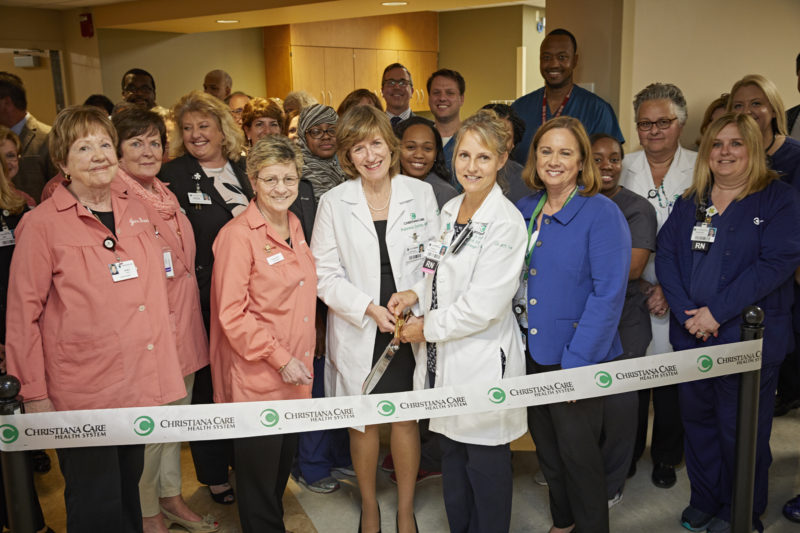
“We are fortunate to have a highly dedicated team trained in geriatric medicine and passionate about helping the population they serve,” said Dr. Curtin. “I am also grateful for Christiana Care’s commitment to quality care for older adults on the ACE Unit. We are providing respectful, expert care in an uplifting setting that is very much conducive to our population’s needs.”
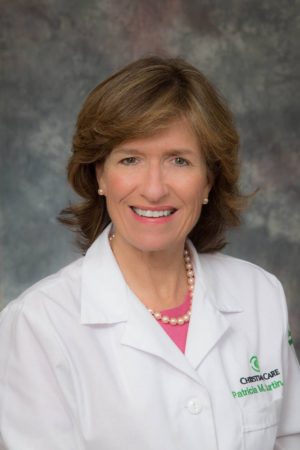
In this bright, warm environment, patient rooms are sizeable, with big windows that look out on the city of Wilmington and interior windows that open onto hallways, allowing the staff to keep a close eye on their patients, many of whom have complex medical needs requiring the expert attention of a multidisciplinary medical team. Hourly rounds, telemetry monitoring and nursing stations throughout the unit keep staff in tune with patient needs and progress. The unit has its own physical therapy gym and a welcoming day room.
“The average age of our patients is 82 years old, and they come to us with all types of acute medical conditions, including pneumonia, kidney failure, acute ischemic stroke or a change in mental status where confusion might be a factor,” said ACE Unit Nurse Manager Paula Tomanovich, MSN, RN, BC.
The new ACE unit offers private rooms for care team members, patients and families to have the best possible communication.
“Patients also come to us with chronic conditions that we manage, so the environment of care for these older adults needs to be conducive to safety and very adaptable to patient needs,” Tomanovich said.
Private patient rooms ensure that patients, family and staff can have confidential, collaborative conversations on the nature of care. “We have given a lot of attention to how we can have the best possible communication between our care team members, patients and their families,” said Tomanovich. “It is critically important to have a well-informed family involved because so often we need to understand a patient’s baseline functioning to know the impact of their illness.”
It is also vital to inform patients and their families about the daily and nightly activities in the unit. “Patients do not have a degree in how to be in the hospital,” she said. “So we are always trying to think as a patient thinks and see as a patient sees.”
The design of hallways and rooms encourages safe mobility. Wide hallways with hand rails encourage patients to be mobile as early as possible in their recovery.
“The space makes it easy for us to help our patients practice walking, get exercise and learn to prevent falls,” said Patient Care Technician Janina Brown.
To prevent falls, low adjustable beds sound an alarm if a patient is about to climb out of bed.
“This is really a matter of safety,” said Tomanovich. “Even patients capable of walking often need someone with them as an extra fall-prevention measure.”
The unit’s design is also meant to be pleasing for family members, who can settle into large, comfy chairs and stay for long stretches. The chairs convert into beds so a loved one can sleep overnight.
“This kind of amenity helps provide a healing environment, as families are a vital part of our patients’ support system,” said Christine Sullivan, BSN, RN.
The Junior Board of Christiana Care contributed $73,725 to the ACE Unit project, funds raised through the May 2016 Medicine Ball.
“The care of our older neighbors requires a special hospital environment and the dedication of highly trained staff that the Junior Board very much supports,” said Nancy Rich, who was president of the Junior Board in 2016.
Dr. Curtin said that she and the care team are still exploring the best way to use the funds to benefit ACE Unit patients and their families.
“We are very grateful for the generosity of the Junior Board and the concern they have shown for our older patients,” she said.
